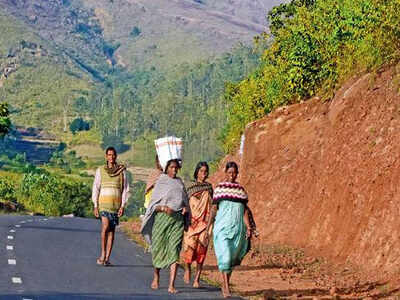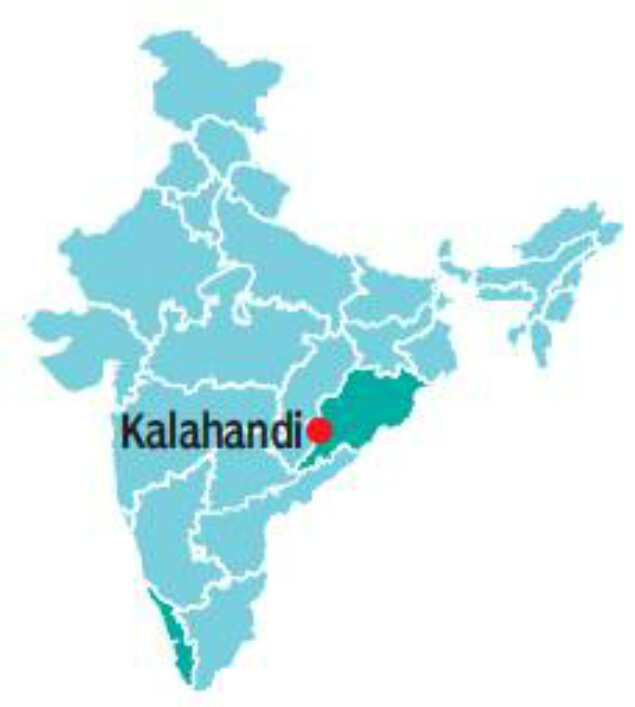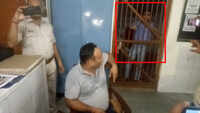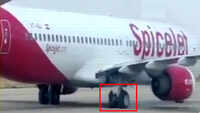
KOCHI: While a migrant labourer is working in Kerala, what are the challenges his family confronts in his native village? Have remittances from Kerala transformed their lives? The answers to these questions lie in a report titled – Challenges of Migrants and Families Left Behind. It is a report on the positive and negative impacts of outward migration in three panchayats of Kalahandi in Odisha.

Historically, Kalahandi has a sinister reputation. It is one of the most-backward districts in India, where series of droughts and ensuing famine had forced mothers to abandon or sell their children. This plight was brought to national attention by the media in mid-80s and things had improved, following continuous governmental interventions. Finally, the remittances sent home by natives working as labourers in other states, mainly Kerala, is transforming the place once dubbed as ‘hell’.
The report was brought out by Gram Vikas, a Bhubaneswar-based rural development organization, in association with Perumbavoor-based Centre for Migration and Inclusive Development (CMID).
In May 2019, they conducted a qualitative research among the families of migrants in Thuamul Rampur, a block in Kalahandi. Researchers travelled to three panchayats of Thuamul Rampur – Adri, Gopinathpur and Maligaon – for the study. Overall, annual remittances from Kerala and other places (amounting to Rs 30-40 crore) have transformed Thuamul Rampur, which is part of Kalahandi. On the other hand, there are challenges faced by families, created as a result of the migration of men.
Remittances have helped set up parallel transport facilities using autos or light transport vehicles, said the report. For example, Parun Majhi of Nuapada village in Adri panchayat, who works as a cook in a restaurant in Kerala earns Rs 20,000/month. He bought an auto in 2017 from his savings, which is now generating additional income for him, while providing a job to another villager.
“Motorcycles bought by many migrant households from remote villages have substantially improved commuting facilities. Remittances helped them build better houses, pay debts, invest in small businesses and secure finance for marriages…. Households with migrants are more-likely to get credit from local financiers, compared to households without migrants,” said the report.
Rama Majhi of Tentulipada village in Adri invested his savings to set up a small grocery shop in his village that is now run by his wife. Working at a petrol pump in Kerala, he earns Rs 12,000/month. For compiling the report, CMID interviewed migrants who came for short visits, youths and village elders.
Migrants who came on leave gave a list of challenges they faced in their host states. “Men reported non-payment and irregular payment of wages, inability to identify a suitable employer who does not exploit them and lack of access to quality healthcare as three important challenges. They sought an agency/interface at the destination that could help them secure appropriate jobs, identify genuine employers and access social security benefits including medical insurance,” the report said.
Wives left behind at home were unable to access health services in the absence of their husbands, said the report. “They are scared to travel alone. They also cited their inability to read and write as a reason for dependence on others. Women from nuclear families disclosed that they lived in constant fear of thieves or drunkards breaking into their home at night. They found it difficult to manage children alone as kids would disobey and skip school often. Another fear was the possibility of extramarital affairs,” it said.
These wives believe that decent mobile phone connectivity could help them keep in touch with their husbands, reducing the chances of extramarital affairs. Now, women have to traverse several kilometres to reach a spot with where mobile network is available; popularly called ‘hello points’, the report said.
“During daytime, migrants are busy at work and family members have to reach ‘hello points’ at odd hours for a peaceful conversation. This is difficult for wives, children, aged parents,” the report added.
Easy access to banking is also almost non-existent. As business correspondents from local banks charge up to Rs 100 for each Rs 1,000 remittance, family members travel to block headquarters at Rampur, where the nearest SBI branch and ATM exists. For some villagers, this is a 40km journey. As there are only two buses on the route, they have to waste a day to withdraw money from the bank. And at the bank, there will be a long queue and ATMs will be out of cash sometimes.
Gram Vikas and CMID felt that establishing a reliable mobile phone connectivity, strengthening the women collective and facilitating a smooth and safe migration will address many of the problems faced by these families in Kalahandi.

Historically, Kalahandi has a sinister reputation. It is one of the most-backward districts in India, where series of droughts and ensuing famine had forced mothers to abandon or sell their children. This plight was brought to national attention by the media in mid-80s and things had improved, following continuous governmental interventions. Finally, the remittances sent home by natives working as labourers in other states, mainly Kerala, is transforming the place once dubbed as ‘hell’.
The report was brought out by Gram Vikas, a Bhubaneswar-based rural development organization, in association with Perumbavoor-based Centre for Migration and Inclusive Development (CMID).
In May 2019, they conducted a qualitative research among the families of migrants in Thuamul Rampur, a block in Kalahandi. Researchers travelled to three panchayats of Thuamul Rampur – Adri, Gopinathpur and Maligaon – for the study. Overall, annual remittances from Kerala and other places (amounting to Rs 30-40 crore) have transformed Thuamul Rampur, which is part of Kalahandi. On the other hand, there are challenges faced by families, created as a result of the migration of men.
Remittances have helped set up parallel transport facilities using autos or light transport vehicles, said the report. For example, Parun Majhi of Nuapada village in Adri panchayat, who works as a cook in a restaurant in Kerala earns Rs 20,000/month. He bought an auto in 2017 from his savings, which is now generating additional income for him, while providing a job to another villager.
“Motorcycles bought by many migrant households from remote villages have substantially improved commuting facilities. Remittances helped them build better houses, pay debts, invest in small businesses and secure finance for marriages…. Households with migrants are more-likely to get credit from local financiers, compared to households without migrants,” said the report.
Rama Majhi of Tentulipada village in Adri invested his savings to set up a small grocery shop in his village that is now run by his wife. Working at a petrol pump in Kerala, he earns Rs 12,000/month. For compiling the report, CMID interviewed migrants who came for short visits, youths and village elders.
Migrants who came on leave gave a list of challenges they faced in their host states. “Men reported non-payment and irregular payment of wages, inability to identify a suitable employer who does not exploit them and lack of access to quality healthcare as three important challenges. They sought an agency/interface at the destination that could help them secure appropriate jobs, identify genuine employers and access social security benefits including medical insurance,” the report said.
Wives left behind at home were unable to access health services in the absence of their husbands, said the report. “They are scared to travel alone. They also cited their inability to read and write as a reason for dependence on others. Women from nuclear families disclosed that they lived in constant fear of thieves or drunkards breaking into their home at night. They found it difficult to manage children alone as kids would disobey and skip school often. Another fear was the possibility of extramarital affairs,” it said.
These wives believe that decent mobile phone connectivity could help them keep in touch with their husbands, reducing the chances of extramarital affairs. Now, women have to traverse several kilometres to reach a spot with where mobile network is available; popularly called ‘hello points’, the report said.
“During daytime, migrants are busy at work and family members have to reach ‘hello points’ at odd hours for a peaceful conversation. This is difficult for wives, children, aged parents,” the report added.
Easy access to banking is also almost non-existent. As business correspondents from local banks charge up to Rs 100 for each Rs 1,000 remittance, family members travel to block headquarters at Rampur, where the nearest SBI branch and ATM exists. For some villagers, this is a 40km journey. As there are only two buses on the route, they have to waste a day to withdraw money from the bank. And at the bank, there will be a long queue and ATMs will be out of cash sometimes.
Gram Vikas and CMID felt that establishing a reliable mobile phone connectivity, strengthening the women collective and facilitating a smooth and safe migration will address many of the problems faced by these families in Kalahandi.
World Cup 2019
Trending Topics
LATEST VIDEOS
More from TOI
Navbharat Times
Featured Today in Travel
Quick Links
Lok Sabha Election Schedule 2019Lok Sabha Election NewsDelhi Capitals teamMI team 2019Rajasthan Royals 2019RCB team 2019Maharashtra Lok Sabha ConstituenciesBJP Candidate ListBJP List 2019 TamilnaduShiv Sena List 2019AP BJP List 2019Mamata BanerjeeBJP List 2019 MaharashtraPriyanka GandhiBJP List 2019 KarnatakaAMMK Candidate List 2019BJP List 2019 WBLok Sabha Elections in Tamil NaduBSP List 2019 UPNews in TamilLok Sabha Poll 2019Satta Matka 2018PM ModiMahagathbandhanNagpur BJP Candidate ListChandrababu NaiduTamil Nadu ElectionsUrmila MatondkarNews in TeluguMadras High CourtTejashwi YadavArvind KejriwalTejasvi SuryaPawan KalyanArvind KejriwalYogi AdityanathJaya PradaSatta King 2019Srinagar encounter
Get the app







